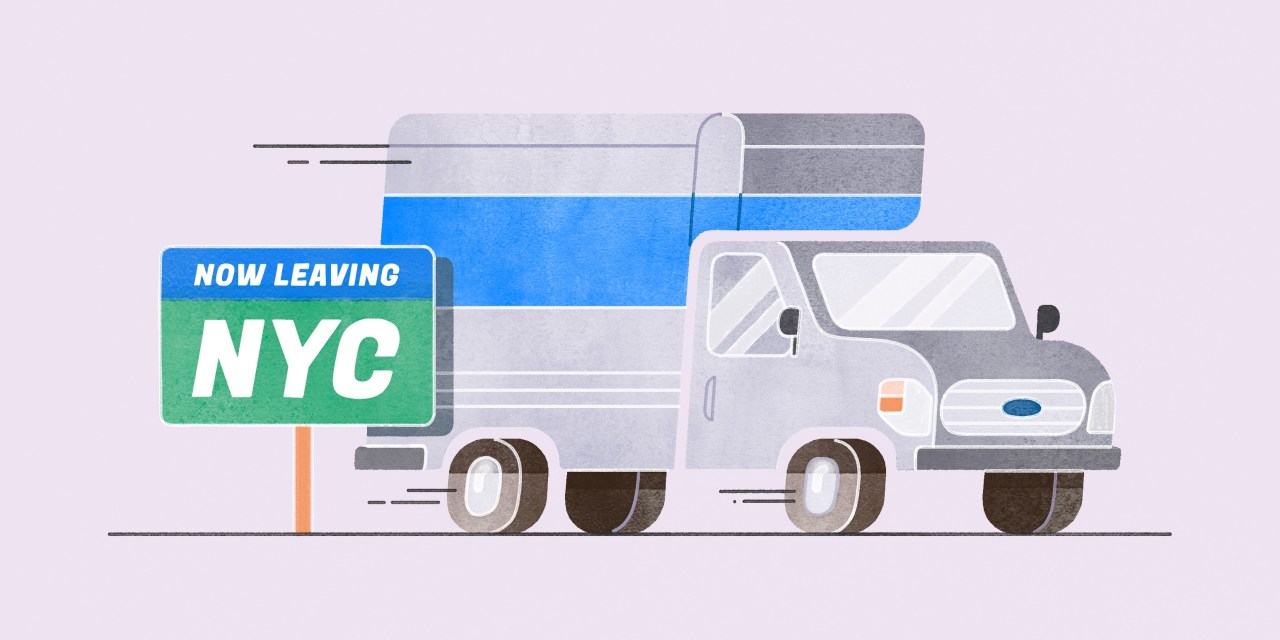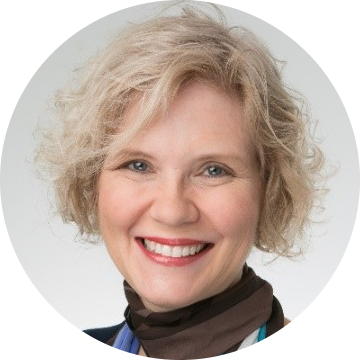How millennial workers leaving city centers are reshaping the suburbs

Beacon, NY, was not always a hot spot for millennials. But the city, located an hour and a half from New York City via the Hudson line on the Metro North, is now a microcosm for post-pandemic suburbs.
Today, it’s nicknamed “Brooklyn North,” or “mini Brooklyn,” to reflect its transformation into a city that can better cater to the expectations — and wallets — of the influx of millennials that flocked there in the wake of the coronavirus pandemic. This wave of city transplants has led to a flurry of new restaurants opening, more housing development and other changes that a long-time Beaconite would have never imagined 20 years ago. In 2020, The New York Times dubbed Beacon as “an arts hub turned refuge for the pandemic-weary.” It’s even been a hot spot for film and tv shoots, including the recently aired TV show “Poker Face” on the streaming site Peacock.
City transplants and lifelong residents are both able to enjoy the flurry of new amenities that have been added in recent years. However, it’s not all rosy. The injection of people in their mid-20s and 30s, along with their disposable incomes, has attracted more developers keen to build smart apartments to suit the lifestyle expectations of this cohort. Naturally, that kind of development has a domino effect on the rents in other local properties.
Among the casualties: Roma Nova, a pizzeria and Mexican restaurant was forced to close at the end of January after a nearly three-decade run. The owners say the decision was forced by rent spikes after their building was purchased last year by a limited-liability corporation called BH Beacon that nearly doubled their rent. The restaurant joins two other local businesses that have also recently been upended by rent spikes too.
Such big changes to the heart of a community can be bittersweet. The boom in property development can out-price locals who have lived their whole lives in places like Beacon. On the other hand, it can open up opportunities for local businesses.
As a lifelong Hudson Valley resident myself, and having lived in Beacon for nearly two years, I have witnessed the changes to the suburbs of New York City. And I’ve seen both sides of the coin. I’ve come across transplants who are keen to give back to the community, whether it’s by volunteering or by other means. And I’ve also come across those long-time residents who bitterly resent newcomers and blame them for negative issues in the area, large or small. Just a few weeks ago, when walking around the block I passed a pile of dog poop on the sidewalk, to which I heard my neighbor said: “those damn city folks!”
How workers have changed the suburbs
Many workers fled expensive cities like New York, San Francisco and Seattle during the coronavirus pandemic, opting for smaller metro areas. With that, change was inevitable. It spans everything from an increase in housing prices, a changing tax base, different voters, and more.
“These sorts of changes and transformations do engender anxiety in neighbors,” said June Williamson, co-author of Retrofitting Suburbia. “Change is happening regardless. The kinds of choices communities have to face is what form that change might take and whether they want to be a part of it or against it,” she said.
Construction has boomed across suburban areas, with upgrades for mixed-use developments, mimicking what you might find in an urban downtown. Here in Beacon, there have been a number of new developments, including Mirbeau Inn & Spa Beacon, the luxury hospitality company that plans to redevelop the historic Tioronda Estate and a proposal to convert the former Reformed Church of Beacon into a hotel and event space with a restaurant and bar, just to name a couple.
However, all the change is a touchy subject for people who have been here forever and are seeing their community change.
“The biggest thing has been seeing the price increases for housing,” said lifelong Hudson Valley resident Kimberly Sauer. “People living on New York City salaries who moved to Beacon to work from home are making higher wages and pricing out the locals who have lived here our entire lives.”
The average sale price for a single-family home based on sales year to date in Beacon is $544,731, according to Hudson Valley real estate broker Sandi Park. RentCafe reports that the average rent in the area is $1,800.
Cross-country trends
Naturally, what’s happening in Beacon isn’t a one-off. It’s a cross-country trend, accelerated in part by remote work freeing up more folks to move out of large cities, but retain their big-city salaries.
“Millennials are suburbanizing quite a bit, especially in the later half of this past decade,” said Riordan Frost, a senior research analyst at the Joint Center for Housing Studies of Harvard University, who is preparing a paper with two colleagues about millennials moving to the suburbs and how they’re reshaping them. “We found that millennials were going to peripheral suburban areas and these areas became more urban over time. They had fewer suburban characteristics and more amenities.”
Pew Research Center reported last year that Americans are less likely than before the pandemic to want to live in cities, preferring suburbs. It found that one in five U.S. adults now express a preference for living in a city, down from a quarter in 2018. The share of Americans who would like to live in the suburbs has increased from 42% to 46% during this time. A lot of that has been driven by millennials (anyone born between 1981 and 1996): During 2019 and 2020, the share of millennials who live in suburbs increased by 4 percentage points, according to a study from investment management firm Cowen and Company.
“When you look at suburbs of large metropolitan areas, we have seen a growing share of more people moving in than out,” said Frost. “That’s been accelerating over the past decades. In 2021, the most recent data we have, it was 80% of suburban counties were gaining more migrants than they were losing. That shows you this acceleration of an existing trend, but a lot of suburbanization.”
That 80% is up from 60% in 2011, according to Frost’s research. While that’s not just millennials, it is millennials who make up a large part of it because they are at the typical age where someone wants to start to find a place to settle.
“You’re seeing this happening all over the country,” said Frost.
What city transplants are doing to be involved in the community and why it matters
“I wish transplants would adapt to being here rather than here adapting to having them,” said Sauer. “I find that the unique charms of my small city are rapidly dwindling. It’d be great if transplants immersed themselves into local culture by volunteering with various city organizations.”
That’s exactly what Minda Sierra is trying to do. She moved to Main Street in Beacon a year ago from New York City. She works as a project manager for a company based in the city, full-time originally and now part-time as she decided to work a local job at a café as well.
“I try to do virtually all of my shopping in Beacon and support local sellers as much as I can because it’s important to me to actively be a part of my community,” said Sierra. “I donate when I can to local causes and make sure to get to know the local business owners first hand.”
She said she’s felt a sense of guilt for being a part of the problem as a transplant.
“Beacon has changed so much in the last 10 to 20 years, and really ramped up in the last couple of years with things like luxury condos,” said Sierra. “It’s not being built for people who lived and spent the majority of their lives here. It’s being built for people who look like me and are looking for more quiet. That’s not okay.”
That’s why she votes in all of the local elections, attends board meetings, and stays involved in the community as much as she can. That’s partially because she was raised in a part of Queens in NYC that underwent the same changes in recent years.
“It was heartbreaking seeing places I loved to eat at being gone,” said Sierra. “It’s sad to watch neighborhoods lose their personality and what makes it original to look like everything else nearby. It’s not fair to see people who made lives and businesses here in Beacon now get the short end of the stick.”
Similar to Sierra, city transplant Wade Hanley moved from Harlem, where he also saw similar changes happening first hand. Because of that, he’s made an active effort to become involved in the community here.
Here for the long term
Hanley still commutes into the city every day from Beacon for his job as an administrator in the education sector. He hops on Beacon’s bus system to get to and from the train station. While he isn’t here for work, he spends most of his free time partaking in local activities, including taking music classes at School of Rock, acting classes at Beacon Performing Arts Center, improv at Serious Comedy Theatre, and dance at Passion Adult Dance Studio, which was opened by a lifelong Beaconite last year. It means him getting his food from the weekly local farmers market and choosing the mom-and-pop pharmacy on Main Street instead of Rite Aid. Now, the local owners know his name and his orders. That kind of blend between transplants and lifelong residents becomes harmonious.
“It’s incredibly important for transplants to talk to locals,” said Sierra.
One thing is the same for Hanley and Sierra: Beacon is home now. “I’m here for better or worse,” said Sierra. Overall, there are lower mobility rates and people are staying put for longer. RedFin found last year that the typical U.S. home changes hands every 13.2 years, up significantly from 10 years ago.
“Working with this data over the years, I would point out that moving to the suburbs has a very strong life cycle pattern,” said Stephan Whitaker, a policy economist in the research department at the Federal Reserve Bank of Cleveland who studies population, migration and generations in urban neighborhoods. “The people who moved to the suburbs during the pandemic are going to face similar incentives to stay there as cohorts before them, like more affordable space, higher performing public schools, and lower crime risk, but the difference now is that they also don’t have to face the main disadvantage of suburbs – the long commute – because of hybrid positions.”
“The Hudson Valley has me ’til death do us part,” said Hanley.

